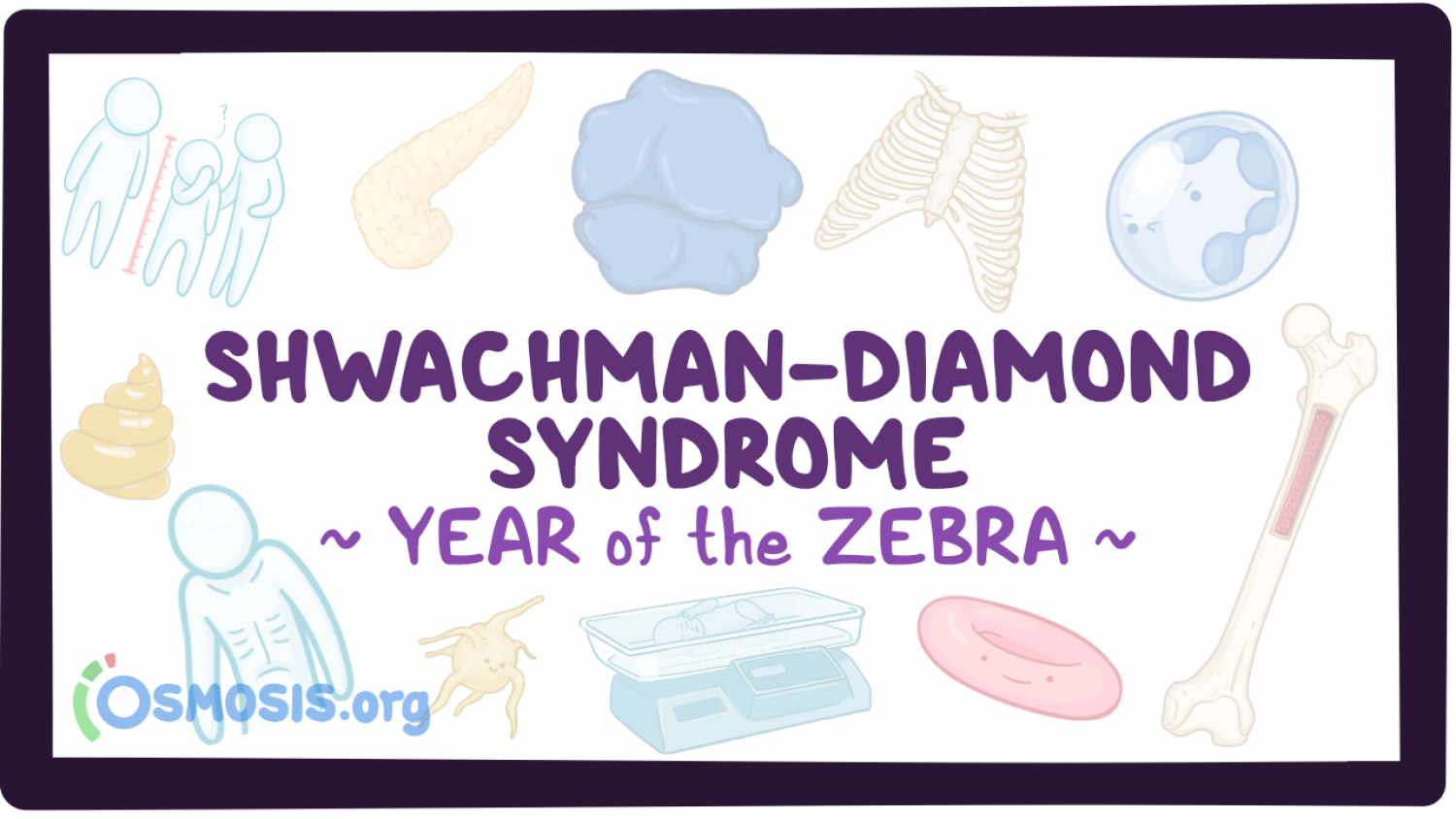
Rare Disease Education: Shwachman-Diamond Syndrome
Editor: Kelsey LaFayette, DNP, RN, FNP-C
"When you hear hoofbeats, think of horses, not zebras,” is a common saying in medical education that means you should think of common conditions first, instead of rare ones, in making a diagnosis. “Rare” is a relative term though and about 7,000 rare, or "zebra," conditions affect more than 350 million individuals worldwide. Although these conditions collectively affect an enormous number of people, each of these conditions individually is rare enough that it can be difficult to secure the resources to study them and to develop treatments and cures. Likewise, awareness of rare conditions may be low and health care professionals may not be familiar with their signs and symptoms making it more difficult to reach a correct diagnosis and provide effective treatments.
To increase knowledge about rare conditions, Osmosis and the National Organization for Rare Diseases (NORD) have collaborated on an initiative to bring education and awareness to the public. We are excited to be a part of this initiative because we believe everyone deserves quality health care, no matter how rare their condition.
Zebra of the Week: Shwachman-Diamond Syndrome
In this day and age, we are used to abundant, relevant, and free-flowing knowledge. There is rarely a time when you ask yourself a question that you cannot look up the answer to in seconds. Despite this ever-growing wealth of information, we are still not entirely sure what the SBDS gene on chromosome 7 does exactly. What we do know is that when altered, it causes this week’s Zebra: Shwachman-Diamond syndrome.
Shwachman-Diamond syndrome is a rare autosomal recessive genetic condition characterized by alterations in the development of the pancreas and functioning of the bone marrow. Signs and symptoms are usually apparent in childhood. The decrease in pancreatic function manifests as malabsorption of nutrients from food, which in turn can cause decreased weight gain, failure to thrive, and steatorrhea (fat-containing stools). Decreased bone marrow function manifests as low counts of immune cells, red blood cells, and/or platelets, resulting in recurrent infections, anemia symptoms, and risk of excess bleeding from minor injuries, respectively. Unfortunately, patients are also at a higher risk of developing leukemia. The estimated incidence of the condition varies between 1 in 20 thousand to 1 in 200 thousand births.
To learn more about the diagnosis and treatment of Shwachman-Diamond syndrome, watch the dedicated Osmosis video on YouTube and Osmosis.org
Meet Jordyn Zajac
The first sign that worried Kim Zajac, Jordyn’s mother, was that her one-year-old was not gaining as much weight as expected. Jordyn then started developing recurrent infections and abnormal blood tests. This prompted additional testing for many conditions including cystic fibrosis and celiac disease. Kim’s daughter had all these symptoms piling up, but no explanation to tie it all together.
She decided to take a deep dive in research and presented a detailed history with arguments to the physicians as to why her daughter Jordyn has Shwachman-Diamond syndrome. After the confirmation, she went even further and provided a suggested book on the condition from a top expert in the country. She is proof that empowered patients in collaboration with their healthcare providers can improve outcomes. Watch her inspiring story above.
Organization Taking Strides
The Shwachman Diamond Syndrome Foundation was founded in 1994 by Joan Mowery, the mother of a patient who could not stand idle as others went through the rare disease journey. Their goals are to advocate for patients on all levels and fund research towards improved treatment and a cure.
The foundation provides reliable educational services and emotional support to families in the form of groups, a dedicated “Family Day”, and a show called SDSFLive that streams episodes on topics relevant to their daily lives. They hold a bi-annual family conference, allowing patients and their families the opportunity to hear and speak to experts in various aspects of the Shwachman-Diamond syndrome. They are also proud sponsors of the Shwachman-Diamond Syndrome International Scientific Congress, which brings together physicians and scientists from around the world to share the most recent information on the condition.
